When you first make the transition from training at a commercial gym to working out in your own home/garage gym you may experience what I like to call machine withdrawal. Machine withdrawal is when you are accustomed to utilizing a machine for any given exercise rather than using free-weights, and now you find yourself missing that machine. You may even be at a loss as to what exercise you should be doing as a free weight alternative. Oh and yes, I did in fact just make that term up.
Well don’t worry, as there are free-weight alternatives to every single exercise you can do on a machine. It may not be the exact same movement, but I guarantee you that you can work every single muscle in your body with a barbell, dumbbells, or even just your own body weight. The best part is that the free-weight alternative is going to almost always be far superior than the machine movement.
If I may rant for a second, I do hate having to refer to these exercises as alternatives. It’s really the machine exercises that are the alternative exercises, but whatever. For the sake of simplicity, I will continue to refer to these exercises as alternatives.
My goal with this article is not to be a giant database of exercises. I merely intend to show alternative exercises to commonly used machines that have less-than-obvious alternatives for those lifters who may be new or just not be as experienced as others. That said, I will mostly avoid listing machine exercises that have very obvious free-weight alternatives. For instance, I don’t think that I need to tell you that the barbell bench press is the alternative to cable loaded bench press machines or the Hammer Strength ISO Bench Press.
Machines Exercises Table of Contents
- Seated Cable Rows (back)
- Lat Pulldowns (lats)
- Back Extensions (low back)
- Leg Extensions (quads)
- Leg Curls (hamstrings)
- Glute Kickbacks (glutes)
- Pec Deck (chest)
- Cable Crossovers (chest)
- Tricep Pushdowns (triceps)
- Abdominal Machines (abs)
- Rear Delt Flyes (shoulders)
If you don’t know what a particular exercise is, click on the name of the movement to see a video demonstration.
I reference bodybuilding.com a lot, as they have the most massive exercise database that I know of and they don’t run ads before each video demonstration, which I figured you all would appreciate. The few remaining videos all link to YouTube, so they may have the short ads you can stop after 5 seconds. I tried to avoid anything with a required 15-30 second ad.
Seated Cable Row Alternative Exercises (Back)
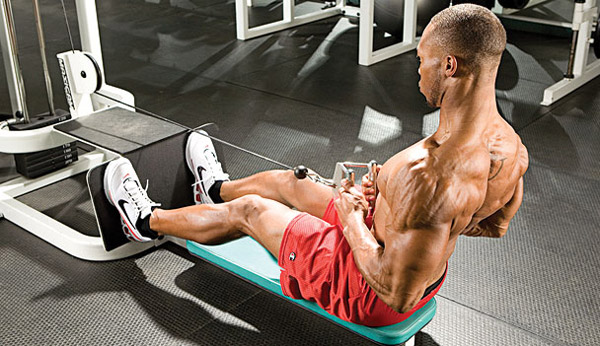
The seated cable row machine is one of the few machines that I like and miss. Selectorized and plate-loaded cable pulley machines typically do a pretty good job of replicating natural movement without restricting range of motion like some isolation machines do. Despite it’s usefulness, you probably won’t be buying this machine for your garage gym. It’s okay, the row is easy to do at home. Use any of the following exercises as an alternative exercise to the seated row.
- Inverted Row – (fixed bar or rack + barbell)
- Dumbbell Rows – (bench + dumbbells or kettlebells)
- Bent Over Barbell Rows – (barbell or Swiss Bar + weights)
- Bent Over Double Dumbbell Row – (dumbbells or kettlebells)
- Landmine T-bar Rows – (beater bar + landmine + landmine handles)
- Seated Band Rows – (resistance bands + grip triangle or wide lat attachment)
Lat Pulldown Alternative Exercises (Upper Back)
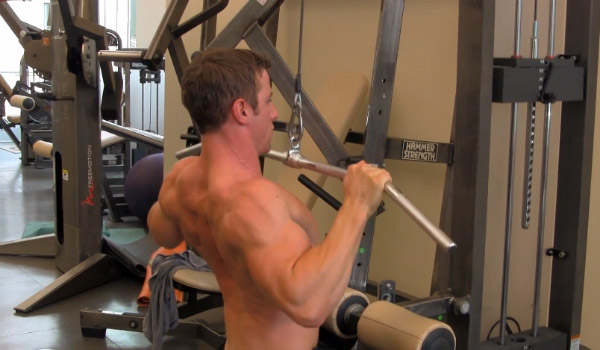
This is another one of the few machines that I believe has a place in a gym. I think the lat pulldown is an excellent machine for helping novices develop the necessary strength to do more than one pull-up or chin-up at a time. Having said that, I’m guessing that you’re not going to have one of these in your garage gym either, so alternatives must be found.
You have a few options. First is to push through with real pulls and chins. Try jumping to gain some momentum and then use slow and controlled negatives to build strength for a couple weeks. You can also attach resistance bands to your pull-up bar or power rack and use them to partially eliminate some of your body weight.
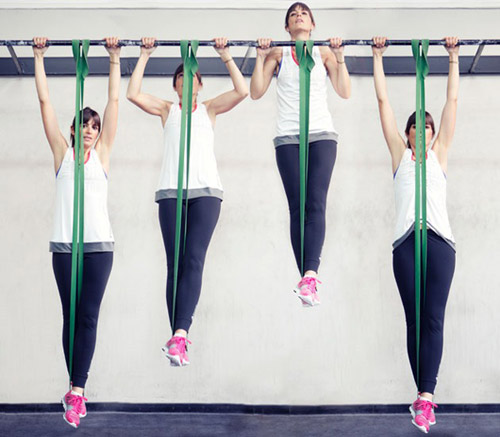
Alternatively, you can do low bar pull-ups (see below). All you need to do is place a barbell in your power rack or squat rack at a height that allows you to hang from the bar in a seated position. Then, place a bench or stool in a position that allows you to have your feet on the bench while you hang from the bar. You’ll end up in an ‘L’ shape when hanging. Having the weight of your lower body supported by something makes the pull-ups easier. The closer the bench is to you, the easier the pull-up.
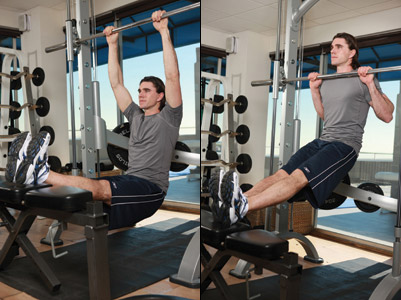
In addition to the assisted pull-ups I just mentioned, the following free-weight exercises will also help develop the lats and in turn improve your ability to do pull-ups.
- Dumbbell Rows – (utility bench + dumbbells or kettlebells)
- Bent-Over Barbell Rows – (barbell + weights)
- Landmine T-bar Rows – (beater bar + landmine + landmine handles)
- Barbell Bent-Arm Pullovers – (bench + EZ bar + weights)
- Seated Band Rows – (resistance bands + grip triangle or wide lat attachment)
- Lat Pulldowns from Power Rack – (Spuds Inc Economy Pulley System)
Back Extension Machine Alternatives (Lower Back)
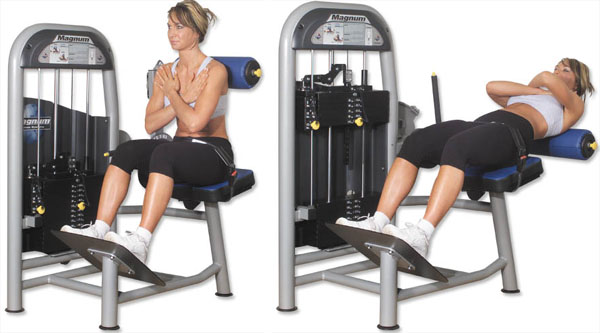
I’ve never known anyone to use this machine over a hyper extension bench or GHD (glute ham developer), but my last global gym had three of them so someone must be using these things. Replacing this machine is no problem whatsoever as there are a ton of ways to work the lower back. That’s good news as it’s an extremely important muscle group. It is part of your core, after all.
This machine can be replaced by any of the exercises listed below. The two I mentioned in the previous paragraph require special equipment, but I’ll list them anyway. To be totally honest, a GHD is not at all an uncommon piece of equipment for a garage gym as it is such a versatile product. The hyper-extension bench (also called the oblique flexor) is not nearly as useful in my opinion.
- Conventional Deadlift – (barbell + weights)
- Back Extensions – (GHD, or hyper-extension bench)
- Back Extensions – (yoga ball, optional weights)
- Superman – (body weight)
- Good Mornings – (barbell + weights)
- Stiff-leg Deadlifts – (barbell + weights)
- Stiff-leg Deadlifts – (dumbbells)
- Olympic Clean & Jerk – (Olympic barbell + bumper plates)
- Olympic Snatch – (Olympic barbell + bumper plates)
Many other exercises will help strengthen the lower back. Variations of the row and other ‘bent-over’ movements require a lot of lower back activation. Of course, doing deadlifts in one form or another is your fast track to a strong lower back.
Leg Extension Free-Weight Alternatives (Quads)
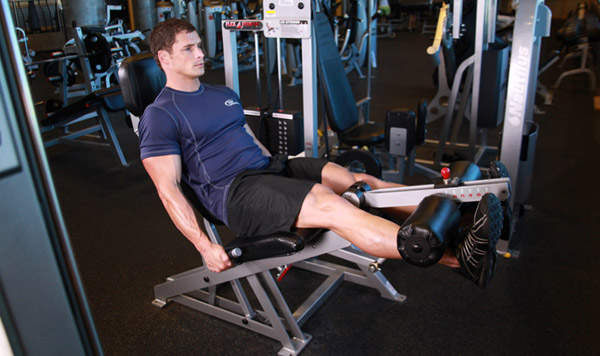
The leg extension machine was designed to isolate and overload the quads. Unfortunately, this movement is not a very natural movement, and it’s also known to be quite hard on the knees. This is one of the few movements that has no true free-weight alternative. Having said that, we’re talking about working out the quads, and there are still a million and one ways to safely tear the quads down without machines.
Any of the exercises below can and will replace leg extensions. Matter of fact, they’re much better. If you were only using the leg extension machine as an accessory exercise and not using them as a way to avoid true leg exercises like the squats, try replacing extensions with Bulgarian split squats or box jumps.
- Classic Barbell Squats – (barbell + squat stand + weights)
- Front Squats – (barbell + squat stand + weights)
- Power Clean – (barbell + weights)
- Barbell Hack Squat – (barbell + weights)
- Bulgarian Split Squat – (barbell + utility bench or box)
- Dumbbell Lunges – (dumbbells or kettlebells)
- Barbell Lunges – (barbell)
- Step Ups – (body weight; plyometric box or bench)
- Box Jumps – (body weight; plyometric box)
- Wall Balls – (medicine ball)
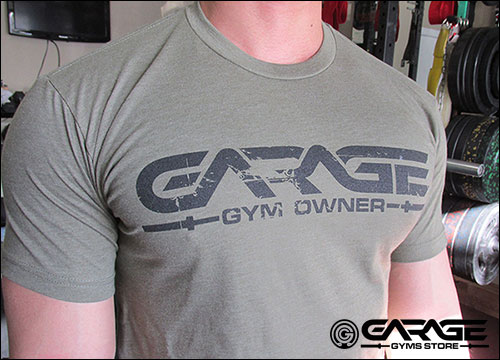
Leg Curl Free-Weight Alternatives (Hamstrings)
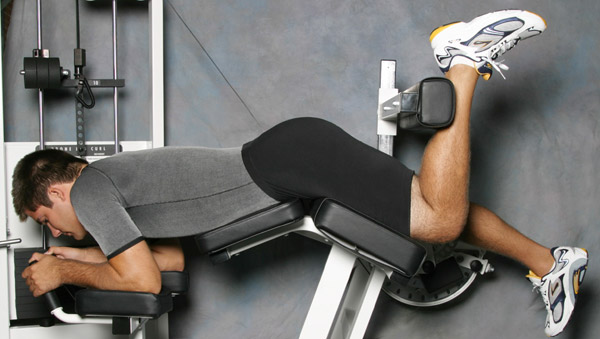
Commercial gyms typically offer one or more of the following hamstring machines; prone leg curls, seated leg curls, or kneeling leg curls. While a convenient isolation machine to have access to in a gym setting, this isolation machine is unnecessary to target the hamstrings. If you happen to own one of those benches with the leg curl attachment, feel free to use that. If not, the following exercises will do an even better job.
- Good Mornings – (barbell + weights)
- Glute Ham Raises – (GHD)
- Stiff-leg Deadlifts – (barbell + weights)
- Stiff-leg Deadlifts – (dumbbells or kettlebells)
Both squats and lunges work the hamstrings hard. Just because you tend to fatigue quicker in the quads doesn’t mean your hamstrings aren’t working double time to do weighted squats.
Glute Kickback Machine Alternative Exercises (Glutes)
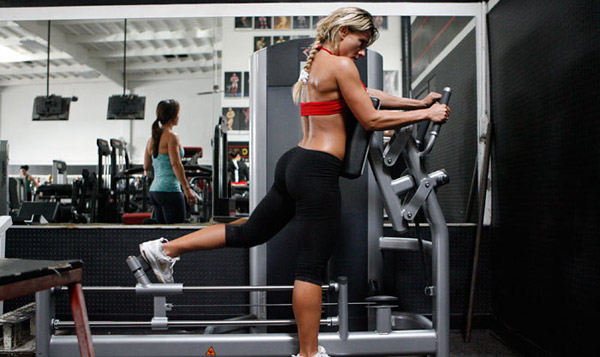
This machine is marketed as one that gives you a nice, firm butt… Rather than having an opinion on the usefulness of this device, let me just show you alternative exercises you can do.
- Barbell Squats – (barbell + squat stand + weights)
- Front Squats – (barbell + squat stand + weights)
- Barbell Hack Squat – (barbell + weights)
- Bulgarian Split Squat – (barbell + utility bench)
- Dumbbell Lunges – (dumbbells or kettlebells)
- Barbell Lunges – (barbell)
- Glute Ham Raises – (GHD)
- Good Mornings – (barbell + weights)
- Step Ups – (body weight; plyometric box)
- Box Jumps – (body weight; plyometric box)
- Standing Band Kickbacks – (resistance bands)
As you can see, leg exercises by default work the glutes. Deep squats and lunges will do wonders for your booty though – you do not need to isolate the glutes.
Pec Deck Machine Alternatives (Chest)
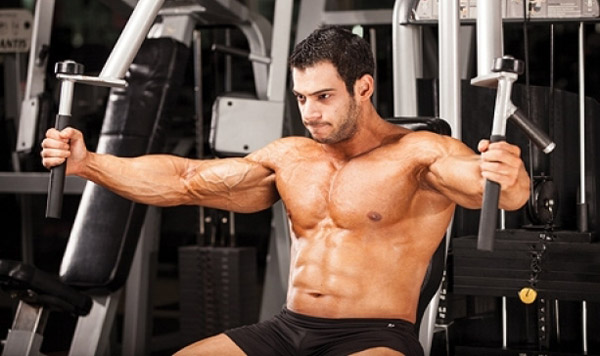
The Pec Deck is a chest isolation machine meant to replicate flyes. It’s known as the machine that creates the mid-chest (sternum) definition. Forget all that. This device is inferior to both cable crossovers and dumbbell flyes. Matter of fact, you should replace this exercise with dumbbell flyes. That’s what Arnold says anyway.
- Dumbbell Flyes – (utility bench + dumbbells)
- Incline Dumbbell Flyes – (adjustable bench + dumbbells)
- Chest Dips – (dip station or dip attachment)
- Cross Over – (stackable resistance bands)
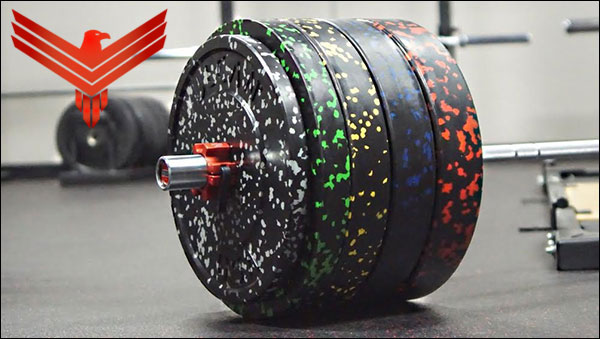
Alternatives to Cable Crossover Flyes (Chest)
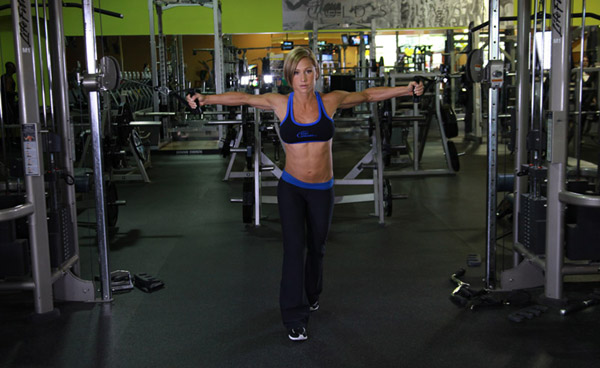
Much like the pec deck only 100 times better, this movement is similar to dumbbell flyes, and Arnold swears the key to a big chest is flyes. Since most people will not have a cable crossover in their garage gym, I suggest replacing the crossover with dumbbell flyes or crossovers with resistance bands. You should have little trouble getting a barrel chest by benching, incline benching, and doing flyes.
- Dumbbell Flyes – (utility bench + dumbbells)
- Incline Dumbbell Flyes – (adjustable bench + dumbbells)
- Chest Dips – (dip station or dip attachment)
- Cross Over – (stackable resistance bands & optional wall anchors)
Tricep Pushdown Alternative Exercises (Triceps)
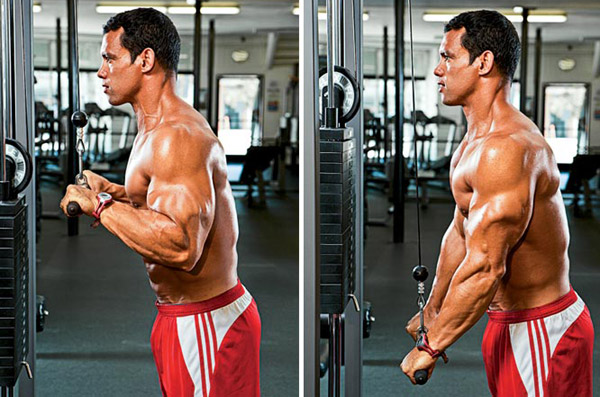
One of the few exercises I miss from my commercial gym days is the reverse grip tricep pushdown. Fortunately, triceps are just as easy to work with free-weights as they are with cables. Personally, I’m a fan of close grip benching and doing pushdowns with resistance bands.
- Tricep Pushdowns – (resistance bands + pressdown rope or revolving pressdown bar)
- Tricep Pushdowns – (Spuds Economy Pulley System)
- Close Grip Bench Press – (power rack + barbell + weights)
- Lying Dumbbell Tricep Extensions – (utility bench + dumbbells)
- Bench Dips – (body-weight; utility bench + optional weights)
- Seated Tricep Press – (bench + dumbbells)
I’ve always heard one of the best exercises for triceps is the lying tricep extension with a straight bar or EZ bar in which you lower the bar behind the head, closer to the floor. In other words, rather than bringing the bar down to your forehead like a skull crusher, you bring it down behind your head where you get a great stretch on the triceps, and it takes a lot more work to bring it back up to a position above your chest (image below.)
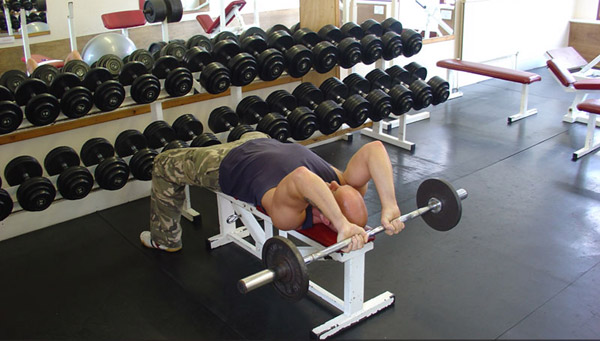
Abdominal Machine Alternative Exercises (Abs)
You don’t need machines to work the abs. There are however some nice accessories to help out, but they are certainly not required. Below is a list of ab exercises you can do instead of using machines. I suggest doing them all. You can increase resistance in any number of ways depending on the exercise; hold weights, use ankle weights, resistance bands, etc. Excuse the randomness of the videos. Sometimes it’s hard to find videos that are short and to the point.
- Crunch – (body weight)
- Ab Rollouts – (ab wheel)
- Jack-Knives – (body weight)
- Hanging Knee Raise – (pull-up bar + body weight)
- Kneeling Crunch – (resistance bands or Spuds Econo Pulley System)
- Oblique Crunch – (body weight)
- Lying Leg Raises – (body weight; optional: ankle weights, optional: yoga ball)
- Hanging Leg Lifts – (body weight, optional: ankle weights)
Rear Delt Fly Alternative Exercises (Shoulders)
Most shoulder exercises that are done in a gym setting focus on the anterior and medial heads of the deltoid. Movements like the overhead press, military press, lateral raises, dumbbell shoulder press, and so forth do not put any significant strain on the posterior head, and this creates a huge imbalance in the shoulders.
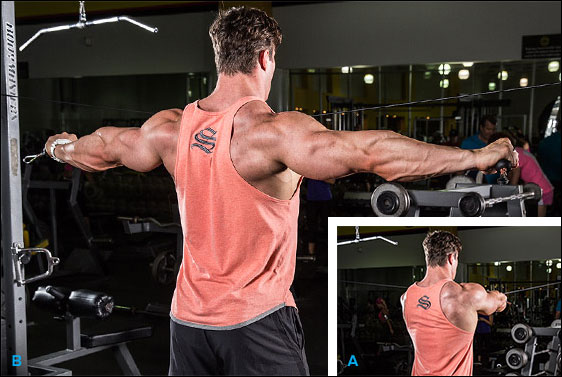
One of the easiest answers to this imbalance is to do delt flyes either in the peck deck machine (most are adjustable machines that allow the delt fly) or in the cable crossover. Since we don’t have either of these machines at home, here are some alternatives.
- Reverse Dumbbell Fly – (adjustable bench + dumbbells)
- Seated Dumbbell Fly – (utility bench + dumbbells)
- Rear Delt Fly – (stackable resistance bands + optional: wall anchors)
- Rear Delt Fly – (Crossover Symmetry system)
- Face Pulls – (resistance bands + pressdown rope OR Econo Pulley System)
About the Equipment Links
For each exercise group, the first instance of each piece of equipment has a link to either one of my comprehensive equipment guides, or directly to the product named.
When I link to a product it’s simply to show you exactly which product that I’m referring to. Obviously you are not obligated to buy that particular model or even brand. That said, nine times out of ten the product I link to is one that I own and approve of. I endorse absolutely no products that I wouldn’t buy and use myself. If you’ve read other articles on this site you already know that I am not a fan of cheap gear that constantly needs replacing.
When I link to an equipment guide instead of an actual product it’s because I truly believe the information in that guide could serve many people, as will the large variety of products discussed and analyzed on that page. Again; even in my guides; I do not refer readers to products that I would not use myself. If I ever include a product I don’t care for, it’ll be very clear in the text attached to that product.
Additional Thoughts
If you looked at enough of this article you probably noticed many recurring exercises. You probably also noticed a lot of recurring gear. That’s the beauty of free-weight exercises; you don’t need a lot of gear or a lot of machines to completely work the entire body. When the standard equipment for a garage gym is a power rack, barbell, a utility bench, and maybe some dumbbells, there isn’t much you can’t do. Adding things like resistance bands, a plyo box, medicine balls, or a dip station can be done affordably, and as needed.
For an even more comprehensive list of exercises sorted by either muscle group or muscle name, take a look at the ExRx.net Exercise & Muscle Directory here. It’s a pretty cool site that I’m sure you’ll want to bookmark. If you need any help choosing gear for your garage gym, you’re already at the right site. Take a look at my equipment guides and equipment reviews. Links are on the navigation bar found at the top of every page of this site. When you’re all done here, share me please. =)

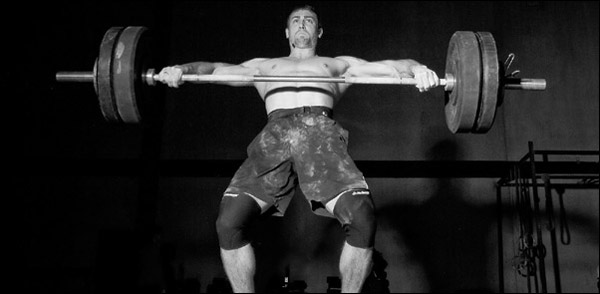
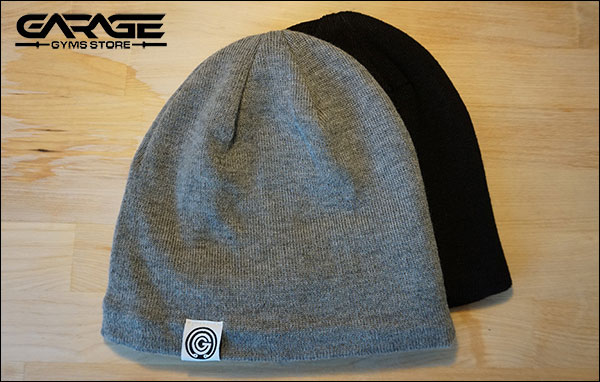
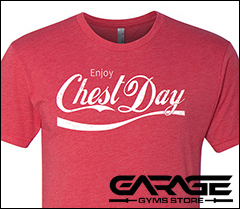
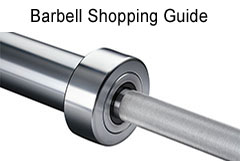
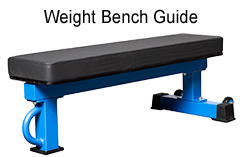
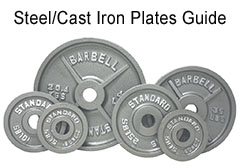
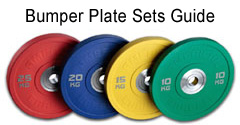
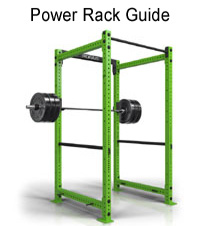
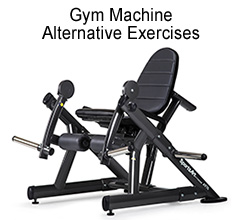



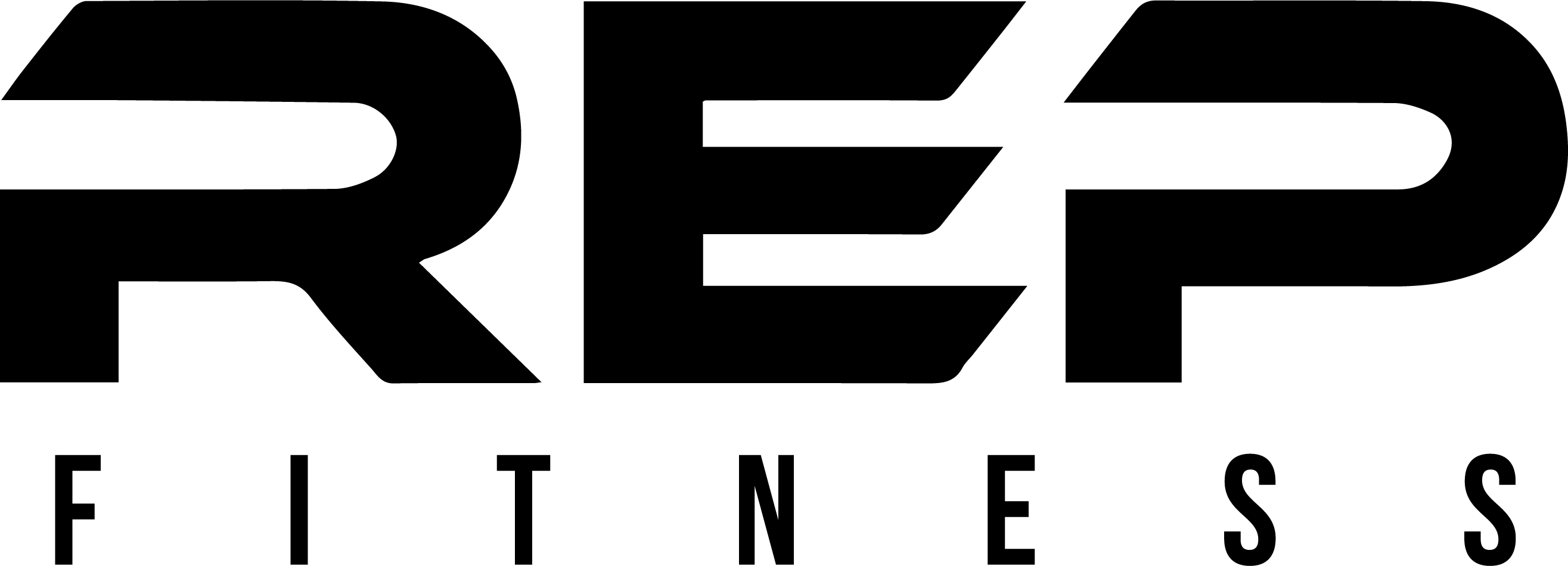
Amazing page !!! Thank you so much for sharing ! I love it
Great write-up! I’ve been traveling for the past 3 months and the inconsistency between gyms is INFURIATING. It’s very difficult to track progress in the gym when machines are missing (or worse, worn out/not well marked).
This is definitely a resource I will share and come back to. Thank you!
Danny
about quads i comment to do leg extencions with dumbell beside legs . will be more difficult and same isolate about quads and also the inside place of the quad as the abdactor makes its bigger also without a bench use chairs or your own body. p.trainer from greece
Great alternatives to those machines. I have recently been putting together my garage gym and this site will help me out. Thanks
I know what you mean about the cable rowing machine; it’s truly a classic movement with a high yield of fitness at any volume, intensity, level, or age.
I was saved early on from machines by picking up the barbell in my youth, but I did eventually learn a variety of cable exercises specifically for my shoulders. Now I can’t imagine my program without them. Strong shoulder girdles are as valuable as wings to me so I’m considering buying this: http://www.fitnessdepot.ca/P11UTD8918/commercial/strength/northern-lights-hi-lo-pulley-station-150lbs-nlhilo150.html (Note: I have no need for a crossover)
I noticed the prices vary wildly for cable stations: anywhere from $150ish to well over $1K. This one by Northern Lights is the only one I could find with a single height-adjustable pulley attachment and it’s even selectorized. I’m 99% sure that it’s exactly what I need and there’s a nearby dealer in town. Most stations only offer a top pulley for lat pull downs and a ground pulley for rowing. Would you happen to know about any similarly designed cable stations? I read your review on the Spud Econo Pulley and it was the first device that gave me hope that I could do cable exercises at home, but I require an implement more similar to a commercial pulley.
Legend makes a couple variations of this, including one that’s plate loaded instead having a weight stack. The issue with the one you linked is that 150-pounds is really not very much weight for a lat machine. Also that frame looks to be either a 12 or 14-gauge frame. Of course at 150 max pull I’m sure the frame can take it.
You won’t get what you’re used to at the gym for under a thousand dollars. I believe the plate loaded Legend is close to a grand, but back when I priced these out that was the cheapest unit worth considering unless you were a total beginner. Those couple hundred dollar variations are very meh. I get it though, I’ve almost bought one of these more than once, and all that stops me is the space requirements (space that I don’t have.)
A superb source of information for gym free exercise. I have added several to my routine and can feel the difference (especially after the sessions….).
Here’s where I disagree…a good plate loaded pulldown/low row combo is like 400$ up here in Canada…so much cheaper in the states….and really doesn’t take up much room but opens up SO MANY exercises that are worth it.
For longevity I would definitely suggest this and a solid cable crossover if you can afford it space and $ wise. I can’t do dumbbell flys (pure agony) so all id be left with would be pressing and dips…which would really tax my shoulders
Exrx.net has a great assortment of exercise videos with ads. All free.
Excellent article. Back in my late teens and early 20s, I had a garage gym that consisted of a 6′ excersise bar w/750 lbs of weights and two dumbbell handles, an ez-curl bar, and a homemade bench and squat rack. I used them to build up to a 425 bench, a 575 squat and deadlift, a 275 lb power clean, and a 255 military press, at 213 lbs bdywt. I quit training when I started to work 58 hours a week in a foundry. At 59, I am in the process of starting to train again. With all of the equipment available, it’s hard to know where to start buying, so I am going with the basics again. A 310 lb Oly set, a power rack, an adjustable bench, a trap bar, a curling bar, and a 200 lb dumbbell set. No machines. None are needed. Guys back in the 30s and 40s like John Grimek and Steve Reeves; in the 50s and 60s like Reg Park and Sergio Oliva; and even into the 70s like Arnold and Franco didn’t use machines. They lifted heavy free weights. The strongest power lifters and Oly lifters never touch machines, it’s all done with free weights a bench and racks.
Thank you, and excellent point.
Hello, looking at starting a garage gym. I’ve been in commercial gyms most of my life and I’m over them. My question is what do you guys do for calf’s in your home gym?
Thanks
This is gold! Thank you so much for taking the time to document this for the plebes like us! I am setting up a garage gym at home and you just made a huge positive impact to my budget!!
Thank you for that. I appreciate it
I still like the Pec Deck machine at gyms because it stretches my pecs and posterior deltoids in a way that I can’t seem to replicate with dumbbells. Do you think they can make some kind of Pec Deck arm attachment for Power racks similar to how they make lever/jammer arms? Or maybe not possible mechanically?
I suppose anything is possible, but a pec deck requires a weight stack.
I personally don’t see anyone bothering trying to make that work on a power rack, but who knows, maybe we’ll be surprised.
Thanks for the read . very informative and food for thought.